HOME | ABOUT US | MEDIA KIT | CONTACT US | INQUIRE
HOME | ABOUT US | MEDIA KIT | CONTACT US | INQUIRE
PUBLISHED JULY, 2023
 1. CargoQuotes, 1st Year
1. CargoQuotes, 1st Year
Growth: 5,289.28%
Average Annual Growth Rate: 1,763.09%
Gross Revenue 2022: $19,166,505
Gross Revenue 2019: $355,641
Full-time employees: 20
For Kevin Brandes, the road to success is best navigated with a big truck. Demonstrating yet again the power and potential of the Kansas City region’s logistics sector, he launched CargoQuotes in 2019 with an understanding that even a fully formed shipping infrastructure was brimming with opportunities. “I have a saying that I seem to repeat day in and day out: “Find that niche and make it the best that it can possibly be!” Brandes says. Consultations with people in the shipping space eventually led him to Kyle Gholston, who came on board as COO. “As we started brainstorming, I kept saying that we need a niche that we could do better than anyone else,” Brandes says. “Kyle commented on Mexico cross-border, and as we dove into it further, we knew that this was the path that we needed to pursue.” One more strategic hire in that specialty, he says, and “the rest is history. We are here to stay and have created a team that will rewrite history for our customers.” Cash flow is king in this space, given that drivers must be paid before customers have processed their freight invoices. “This can put a squeeze on capital at a time when as a small but rapidly growing company, you need capital to reinvest in your No. 1 asset, your people,” Brandes says. “We’ve been diligent in managing our finances and ensuring that we have the cash in place each day to successfully run and invest back into our business.” Early success also depended on an all-hands-on-deck ethos. “As a start-up, we had to lead from a position of need; if it needed to be done, we did it regardless of position,” Brandes says. “As our growth began to accelerate, we were able to reinvest in our business and begin the process of defining roles so that those who were best at a given role could excel in that role.” But the cultural foundation was set: “No one was above any role, teamwork was critical, and exceptional customer service would separate us from our competition,” he says. “Today, our leadership continues to focus on the efforts that have brought us here as well as focusing on scalability, organizational structure, talent management, and financial performance, among other challenges as they arise.” The company’s experience tells a story of a sector awash in change. “The transportation industry is never going away—the mode of the industry may change a little bit, but it will always be here,” Brandes says. “That being said, I didn’t want to reinvent the wheel, but I thought if we could make certain segments run better and more efficiently, then that is what I wanted to focus on. It is no secret that the transportation industry has been transformed with the ever-changing technology that makes everything run smoother.” Among the other lessons learned: “You cannot anticipate and plan for everything,” Brandes says. “When we started in 2019, it was a challenging market for logistics companies. Capacity was abundant, and demand was not, but we took the strategy of fishing in the waters where there was less competition. While there were competitors in the cross-border space, there were significantly fewer than in other markets. This allowed us to prosper and grow in a tough market.” By mastering that niche, his team was set to soar. “Once you have proven your value to your customers in a niche space like cross-border, they will invite you to help in other ways and in other markets,” Brandes says. “We, in turn, show our customers and carriers that we value them.”
 2. Hawaiian Bros, 2nd Year
2. Hawaiian Bros, 2nd Year
Growth: 1,578.28%
Average Annual Growth Rate: 526.09%
Gross Revenue 2022: $99,562,204
Gross Revenue 2019: $5,932,392
Full-time employees: 2,181
It’s laughable to suggest that annual growth of more than 500 percent, and nearly 1,600 percent over four years, represents a “cooling” phase. Now that the worst of the bucking has stopped, the McNie brothers—founders Cameron and Tyler—are still riding a spirited bronc at Hawaiian Bros Island Grill, which sat atop the CR100 a year ago. The plate-dinner concept—island-styled protein entrée with sides of rice and macaroni and cheese—continues to be a huge hit wherever their next store opens. Their concept is built around the style of lunches that originated with plantation workers in the islands—has proven popular enough to begin franchising, bringing the flavors and culture of the central Pacific to America’s heartland. It now has locations open in eight states, with two more in the works—Arizona and Iowa are next—and in cities that include New York, Chicago, Dallas and Houston. In the Kansas City region, the chain operates 14 storefronts. Driving growth in 2022 was a $25 million private-equity infusion from a single investor.
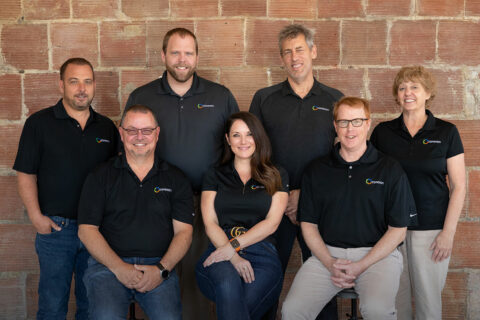 3. Conexon, 4th Year
3. Conexon, 4th Year
Growth: 1,112.65%
Average Annual Growth Rate: 370.88%
Gross Revenue 2022: $173,803,260
Gross Revenue 2019: $14,332,527
Full-time employees: 675
Back in the Top 10—again—and with four-digit growth over four years—again—you’d think Randy Klindt’s team at Conexon would be due for a breather. No chance: Not only does the recent four-year average of 370 percent stand out this cycle, the company is up 191-fold in size since 2016, the baseline year for its first CR100 appearance in 2020. Conexon works with rural electric cooperatives to bring fiber connections to homes in rural communities, providing end-to-end broadband deployment and operations support. It got there by creating a model where, working with an electric distribution cooperative, a rural community can be served with fiber broadband connectivity in a cost-effective way that benefits the electric utility and its membership. The need for such reliable services was exposed during the pandemic; the availability of new government subsidies where electric cooperatives could participate in rural broadband accelerated their involvement in broadband services as well as created a catalyst for the launch of the Conexon, says Klindt.
 4. United Real Estate Group, 5th Year
4. United Real Estate Group, 5th Year
Growth: 1,028.93%
Average Annual Growth Rate: 342.98%
Gross Revenue 2022: $509,765,840
Gross Revenue 2019: $45,154,890
Full-time employees: 115
At some point, you have to wonder if there are any limits to the scale that Dan Duffy’s real-estate enterprise can achieve. United Real Estate Group has taken over the top spot as Missouri’s largest realty company, leveraging the power of tech tools to drive sales for nine separate agency brands in its stable. All told, the company says, its platform supports more than 630 offices and 21,000 real estate and auction professionals across four continents. Those brands combine for north of $27 billion in aggregate sales every year. The firm also operates an in-house advertising agency, providing distinctive marketing support and collateral for lifestyle property websites and access to a database with more 650,000 opt-in buyers. The company’s growth flows from Duffy’s disruption of traditional real estate brokerage models; by focusing on what agents need, United enables them to be entrepreneurs in their own right. Earlier this year, he cracked the prestigious Swanepoel Power 200 as one of the nation’s most influential realty executives.
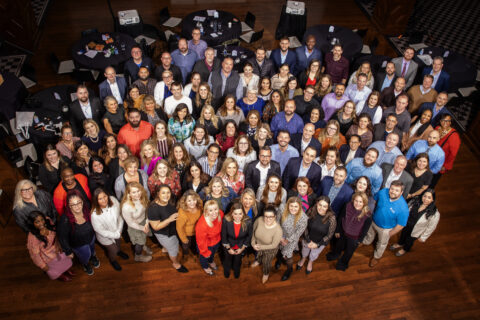 5. Favorite Healthcare Staffing, 1st Year
5. Favorite Healthcare Staffing, 1st Year
Growth: 1,026.49%
Average Annual Growth Rate: 342.16%
Gross Revenue 2022: $1,621,101,145
Gross Revenue 2019: $143,906,742
Full-time employees: 4,300
It’s no secret that the nursing profession was upended in 2020 with the arrival of a global pandemic, and hospital executives desperate to staff their operations needed more nurses—stat. The travel nursing sector became an immediate, if costly, solution, allowing nurses to significantly increase the value of their care by taking short-term positions with health-care providers. Coming up on nearly 40 years in business at that point, Favorite Healthcare Staffing was almost uniquely positioned to seize an opportunity for explosive growth. That segment, however, was but one chapter of the growth story. Additional success factors came from providing staffing solutions in other allied health roles, direct-hire, and managed services options, disaster-level emergency response care, and other service lines. “In 2019, Favorite was a mature organization,” said CEO Christopher Brink. “It was really about waking up the organization and doing something great,” starting with taking care of its people first and focusing on providing superior client service.
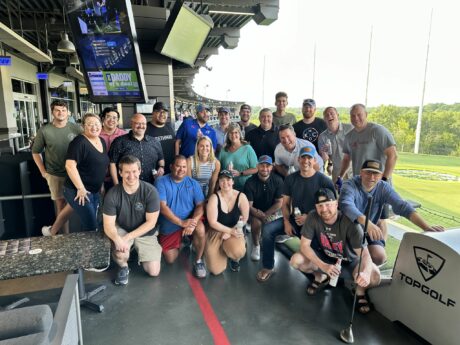 6. Sethmar Transportation, 4th Year
6. Sethmar Transportation, 4th Year
Growth: 620.20%
Average Annual Growth Rate: 206.73%
Gross Revenue 2022: $109,458,850
Gross Revenue 2019: $15,198,336
Full-time employees: 79
It has backed away—just a hair—from the glittering numbers that made it the King of the CR100 in 2021, but ponder this for a moment: Sethmar Transportation needed only two more years to triple the 2020 top line from that No. 1 appearance. A thriving—and growing—service line continues to keep the engines revved for this specialist in third-party logistics. From full and less-than-truckload services to intermodal and expedited freight to warehousing and drayage services and consolidated distribution, Sethmar is making the most of Kansas City’s growing position as the center of America’s logistical might. What helped keep the company on this growth arc? “Hiring the right people in the right position,” says CEO Ben Bolin. “Servicing our customers and acting as an extension of their own, we’ve been able to grow while other brokerages were having to let people go.” That knowledgeable staff of logistics professionals, the company says, are well-versed in what it takes to move raw materials, packaged and finished goods on behalf of some of the world’s largest manufacturers and distributors.
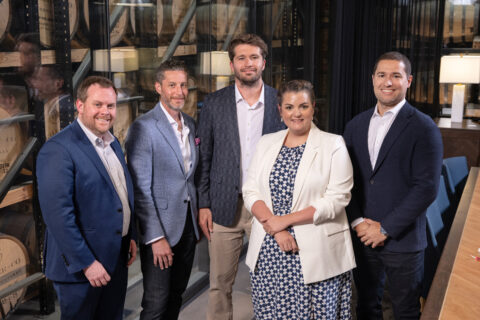 7. Propio Language Services, 11th Year
7. Propio Language Services, 11th Year
Growth: 573.52%
Average Annual Growth Rate: 191.17%
Gross Revenue 2022: $96,478,000
Gross Revenue 2019: $14,324,470
Full-time employees: 124
No strangers to rapid growth, the translation-services team at Propio Language Services had propelled the Overland Park company to nine appearances on the CR100 before Marco Assis was named chief executive in 2019. Well, it turns out that when you talk about rapid growth, you’re speaking his language: Back-to-back years of record revenues for a company that specializes in translation services by video and phone, leveraging proprietary tech to provide a high-quality product at some of the best rates you’ll find in the translation-services sector. On top of that, it made five acquisitions during a 15-month stretch early in its tenure in 2021-22. The ability to incorporate those operations into the corporate model was key to improving the company’s margin and driving bottom-line growth. Its broad service line includes remote and in-person interpreting, business and legal document translation, and assessment of third-party interpreters. Since coming on board as a $7 million company with 10 employees in 2017, he’s led the charge that has swelled the staff size to 200.
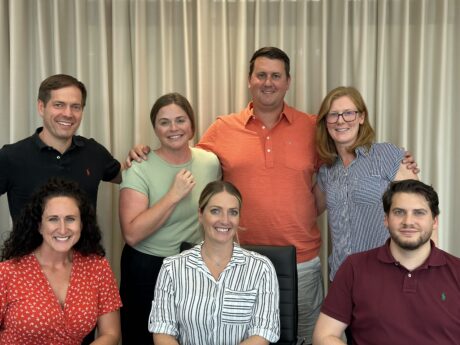 8. BARR Advisory, 2nd Year
8. BARR Advisory, 2nd Year
Growth: 529.21%
Average Annual Growth Rate: 176.40%
Gross Revenue 2022: $9,565,265
Gross Revenue 2019: $1,520,202
Full-time employees: 65
Compliance, cybersecurity, HIPAA, technical manuals—there is seemingly no end to the regulatory, operational, or technological hoops through which businesses must jump to succeed. Less than a decade after Brad Theis opened it as a small consultancy, BARR Advisory now has clients in more than 20 countries scattered across every continent save Antarctica. The firm serves companies of almost every size, from high-growth startups to Fortune 1000 companies, and helps them navigate processes in highly regulated industries, including technology, financial services, health-care, and government. Competency has been a key to growth: the firm is one of just nine in the U.S. eligible to perform audits against ISO/IEC 27001, SOC 2, HITRUST, the three highest-regarded business-certification standards, and its associates hold more than 100 industry certifications. That Thies, a University of Kansas accounting graduate isn’t an accountant today is simple: “I didn’t like accounting,” he wryly admits. He spent nearly 15 years with KPMG, then Reciprocity, honing his skills in IT advisory services and compliance.
 9. Playfair Data, 2nd Year
9. Playfair Data, 2nd Year
Growth: 470.18%
Average Annual Growth Rate: 156.73%
Gross Revenue 2022: $3,679,326
Gross Revenue 2019: $645,297
Full-time employees: 12
Technological advancements have made it possible to track and store more data than ever before, but companies still need a translator to make sense of that data and turn it into something actionable, says Playfair Data founder Ryan Sleeper. “Visual analytics is that translator.” His team helps companies, irrespective of size or sector, move data analysis away from outdated spreadsheet format with visual solutions that facilitate better decisions. So having the right product is vital. So is having the right team—and keeping them. “Our Kansas City team has a zero percent employee turnover rate,” Sleeper says. In addition to the core services of visual analytics consulting, data dashboard development, and Tableau training, Playfair is releasing so many products that it has become challenging to raise awareness of everything available, Sleeper says. To manage the growth, it brought in a full-time marketing manager, upgraded its project management software daily, and increased investment in its local marketing partner.
 10. EDZ Systems, 3rd Year
10. EDZ Systems, 3rd Year
Growth: 460.21%
Average Annual Growth Rate: 153.40%
Gross Revenue 2022: $8,458,617
Gross Revenue 2019: $1,509,899
Full-time employees: 10
EDZ Systems snares a second straight Top 10 finish, and to keep it growing, CEO Elizabeth DeZeeuw has repositioned her leadership ranks to meet the challenge of providing IT staffing and services. “As our business grew and expanded, as leaders, our owners and management team created the right structure and secured resources to support the business,” she says. “The more we grew, the more important it was to have capable division leaders supporting the organization in order to mature all our business processes, from HR and recruiting to finance and administration.” That meant focusing on building the business at the top, while “trusting that we hired capable and eager employees to foster the continuing growth.” A continuing challenge, she says, is “finding individuals who want to work daily in an office as a team.” With this level of growth, “there are no shortcuts,” she advises. “Look at your business and have the tenacity to pursue current goals but allow flexibility to evolve as the business grows,” she says.